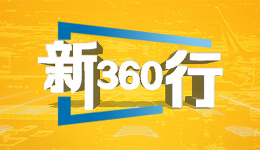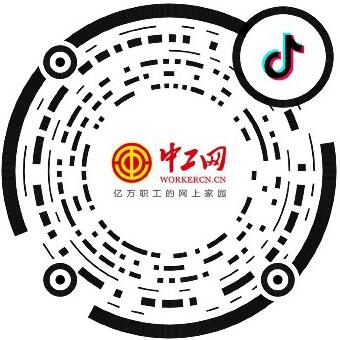Original title: Xinhua Vision | How far is it before autonomous vehicles are on the road in large scale?
Xinhua News Agency, Beijing, May 23
Xiong Zhengyan, Guo Yujing and Zhang Xiao from Xinhua News Agency's "Xinhua Perspective"
Recently, many places announced the expansion of automatic driving test area: 3474 square kilometers of eight open urban areas in Hangzhou, Zhejiang Province, are used as test application areas for intelligent connected vehicles, accounting for more than 20% of the city's area; Shenzhen, Guangdong, announced 43 new roads, making 944 kilometers of roads open to automatic driving in the city; Beijing opened the first high-speed railway station autopilot test, and defined the scope of autopilot test between Beijing Economic Development Zone and Beijing South Railway Station

On May 22, the self driving shuttle bus was driving on the road of Future Science and Technology City, Yuhang District, Hangzhou. Photographed by Huang Zongzhi, reporter of Xinhua News Agency
Many consumers find that the automatic driving function has gradually become the "standard configuration" of cars when they go to auto shows or buy new cars. In addition, more and more logistics, public transportation and other functional unmanned vehicles have entered daily life. How far is it for autonomous vehicles to go on the road in large scale?
The application scenario of unmanned vehicles increases auxiliary driving and expands to medium and low price vehicles

Information picture: On March 15, 2022, an unmanned delivery vehicle was tested in Hefei High tech Zone. Photographed by Xinhua News Agency reporter Zhou Mu
Hefei, Anhui Province, at more than 6:00 a.m., a van loaded about 200 parcels started from the Zhongtong warehouse station in the High tech Zone, drove 7 kilometers and stopped steadily at the entrance of a community. This is an unmanned delivery vehicle. There is no driver on the vehicle.
Xiao Li, the courier, said that he used to pick up pieces every day and go to the station three or four times; Now, the unmanned vehicles loaded with large items will automatically be delivered to the points near the delivery area. The courier just needs to take small and light items out of the shift and meet the unmanned delivery vehicles directly.
"This is an L4 autonomous driverless vehicle independently developed in China, which has the automatic driving capability of 40 kilometers per hour in urban open road scenes. We have obtained the operation license of unmanned delivery vehicles in more than 20 cities, with a mileage of more than 8 million kilometers, and are still used in urban security patrols, retail and other scenarios. ”Li Ziyi, co-founder of the Neolithic Unmanned Vehicle, said.
What does the "L4" of this car mean? According to the Classification of Driving Automation implemented in China, driving automation is divided into 6 levels. L0 to L2 are driving aids, and the driver needs to monitor driving throughout the journey; L3 is conditional automatic driving, and the driver takes over in case of emergency; L4 is highly automatic driving; L5 is fully automatic driving.
In the high-level autonomous driving demonstration zone in Beijing, there are not only L4 unmanned distribution vehicles, intelligent Internet connected passenger vehicles and buses, but also more than 800 autonomous vehicles, such as unmanned shuttle vehicles, cleaning vehicles, patrol cars, retail cars, etc., serving people's lives in various scenes.

On May 21, 2024, an driverless minibus was picking up passengers in the sub center of Beijing. Photographed by Ju Huanzong, reporter of Xinhua News Agency
In Wuhan, hundreds of turnip fast running unmanned vehicles shuttle between more than ten districts. Wang Yunpeng, president of Baidu Intelligent Driving Business Group, said that the number of service orders of Radish Express accounted for more than 1% of the number of car hailing orders in Wuhan. It also operates in Beijing, Chongqing, Shenzhen and other places, with a total number of orders exceeding 5 million.
From the perspective of passenger vehicles, L2 and above auxiliary driving functions are accelerating to get on the vehicle. According to the report of the Passenger Federation, the loading rate of new energy passenger vehicles with L2 and above auxiliary driving functions from January to February this year was 62.5%, while the loading rate of new energy passenger vehicles last year was 55.3%, and the loading rate of fuel passenger vehicles was 36.6%.
For passenger car drivers, what are the current technologies that can maximize the freedom of hands and relieve fatigue? Many car companies give the answer: urban NOA.
The full name of NOA is Navigate on Autopilot, which is often translated as "pilot assisted driving" in the industry. Through NOA, users can realize the point-to-point navigation assisted driving function in a specific road range, and the vehicle can reach the destination without taking over. By the end of 2023, there are more than 70 models of NOA standard or optional models on sale in the Chinese market, an increase of more than 160% over the previous year.
Once, NOA was exclusive to high-end electric vehicles, but this situation is changing.
Shen Shaojie, the person in charge of Dajiang Vehicle, said that one of the pain points of NOA is the high price. Although almost all new energy vehicles above 300000 yuan have NOA function, few vehicles below 200000 yuan, which occupy more shares of China's passenger vehicle market, carry NOA.
Since this year, NOA functions have begun to expand to middle and low price models. Geely, Xiaopeng and other car companies have launched models equipped with NOA function at a price of less than 200000 yuan, and Dajiang has launched a basic smart driving scheme with NOA function for dual-use vehicles, with hardware costs of about 7000 yuan.
Frequent central and local support policies accelerate technological innovation of enterprises
In recent years, the automatic driving technology in China has developed rapidly to above L2 level, which is inseparable from the national policy support.
In November last year, the Ministry of Industry and Information Technology and other four departments issued the Notice on the Pilot Work of the Access and Road Access of Intelligent Connected Vehicles to support the access and road access of L3 and L4 autonomous vehicles.
In December last year, the Ministry of Transport issued the Guide to Transport Safety Service for Autonomous Vehicles (Trial), which guides and standardizes the application of autonomous driving technology in the field of transport services, and is applicable to L3 to L5 autonomous vehicles.
At the local level, Shenzhen, Shanghai, Hangzhou and other places have carried out local legislation on autonomous driving, and Beijing's autonomous vehicle legislation has also been included in the 2024 legislative review project.
Beijing, Shanghai, Chongqing and other places have issued L3 highway road test licenses to at least 7 automobile enterprises, including BYD, Avita, Mercedes Benz, BMW, Zhiji, etc.

Radish Run driverless vehicle is driving on the road in Pingshan District, Shenzhen City (photographed on June 15, 2023). Photographed by Liang Xu, a reporter from Xinhua News Agency
In terms of technology, enterprises such as information communication, consumer electronics, science and technology, represented by Huawei, Xiaomi, Dajiang, etc., have crossed into the automotive industry, driving the development of automatic driving technology.
Huawei and Xiaopeng have developed NOA functions that do not rely on high-precision maps. Huawei's Hongmeng Zhixing has cooperated with automobile enterprises such as Celis, Chery, JAC, BAIC Bluevale, and launched brands such as Interworld, Smartworld, and Xiangjie.
The innovation of Chinese automobile enterprises has also been recognized by foreign counterparts. Last month, Xiaopeng Automobile signed a strategic cooperation framework agreement with Volkswagen Group. Both parties will develop a new electronic and electrical architecture based on Xiaopeng's latest technology and apply it to the CMP platform developed by Volkswagen for the Chinese market. Mass production and loading will begin in 2026. At that time, Volkswagen's two cars will use Xiaopeng NGP intelligent driving technology.
Large scale social applications still have a long way to go
It is recognized in the industry that the realization of automatic driving is an extremely complex system engineering, and policies and laws, application scenarios, software and hardware technologies, etc. have an important impact on its development.
Looking into the future, autonomous vehicles are moving from the test area to a broader practical application scenario.
In June this year, Beijing High Level Autonomous Driving Demonstration Zone will expand from the current 160 square kilometers to 600 square kilometers. The relevant person in charge of Beijing Self driving Office said that, as conditions are ripe, Beijing will gradually open more stations to realize the open connection of Beijing South Railway Station, Fengtai Railway Station, Chaoyang Railway Station, Qinghe Railway Station, Urban Sub central Railway Station, Daxing Airport and Capital Airport, and create more benchmark cases of self driving application scenarios.

On March 1, 2024, an autopilot was driving on the autopilot line from Beijing Daxing International Airport to Yizhuang. Photographed by Ju Huanzong, reporter of Xinhua News Agency
With wider space, autonomous cars run more smoothly.
Taking the self driving passenger car as an example, the safety officer gradually moved from the main driver to the co driver, then to the rear row, and finally to remote control to completely realize the unmanned in the car; The original road test is also moving towards manned and commercial pilot in the accumulation of mileage.
Experts believe that the AI big model can reconstruct the automatic driving technology architecture, synthesize simulation scene data, predict the safety risks of the automatic driving fleet, and accelerate the development and application of automatic driving technology.
At the same time, in recent years, traffic accidents caused by automatic driving have occasionally occurred, causing concern.
"Although automatic driving is close to or even surpasses human driving in some scenes, there is still a long way to go before large-scale socialized and commercial application," said Zhang Yongwei, vice president and secretary-general of the China Electric Vehicle 100 People Association.
The commercial safety application of automatic driving requires more data accumulation and scene training. Zhang Yaqin, academician of the Chinese Academy of Engineering, said that Baidu L4 automated driving test vehicles have driven nearly 100 million kilometers in total, but the data for extreme conditions are still insufficient, and there are challenges in data classification, labeling, processing and compliance. The application of large models in the automotive industry puts forward higher requirements for the flow and sharing of data resources.
Lei Jun, founder of Xiaomi Group, believes that intelligent driving products in the current industry are still quite different in terms of function definition, safety performance, human-computer interaction, operating conditions, data application, etc., and there are hidden dangers in driving safety and data safety; It is necessary to promote the implementation of relevant regulations, standards and product supervision measures as soon as possible, and standardize the safe application of intelligent driving products.
The reporter noted that with the rapid development of the intelligent connected vehicle industry, the Ministry of Industry and Information Technology and relevant departments are actively promoting the improvement of laws and regulations related to intelligent connected vehicles and automatic driving.
The Ministry of Industry and Information Technology said that, in the next step, it will accelerate the development of regulations on the management of production access permits for road motor vehicles, clarify the requirements for intelligent networking, automatic driving, network security, data security, etc., continue to promote the revision of the road traffic safety law, and clarify the contents of automatic driving vehicles on the road, traffic accident handling and responsibility sharing at the legal level.
























